Results 8,881 to 8,890 of 12096
Thread: Anandtech News
-
11-28-18, 01:53 PM #8881
Anandtech: NEC Launches Narrow Bezel MultiSync EA271U Display: 4K & USB-C Charging
NEC has released a new 27-inch performance mainstream monitor aimed at business and enterprise customers that are after a 4K display with modern USB Type-C connectivity. The MultiSync EA271U monitor offers rather typical specs for an LCD of this class, but adds some additional features to cut down power consumption of the device, which may appeal to certain companies.
The NEC MultiSync EA271U is a 27-inch IPS monitor that offers a 3840×2160 resolution, 350 nits brightness, a 1000:1 contrast ratio, 178° viewing angles, a 60 Hz refresh rate, and a 5 ms response time. While the LCD is aimed at typical business and enterprise workloads, it's still a 10-bit panel and can reproduce 1.07. billion colors, a rare feature for products of this class. As for color gamut, it covers 100% of the sRGB color space, 78.1% of the AdobeRGB gamut, and 75.1% of NTSC.
One of the prime features of the MultiSync EA271U are its thin 1-mm bezels that enable users to build near-seamless dual or multi-display configurations. Meanwhile the monitor is supported by NEC’s ControlSync software that enables easy setup of up to six displays.
Two other interesting features that the NEC MultiSync EA271U monitor offers are ambient light and human presence sensors, which can adjust brightness depending on ambient lighting or switch to power saving mode if the user leaves. Since many companies are trying to cut down their power consumption and “go green”, the said capabilities may actually sell the product to the target audience.
When it comes to connectivity, NEC’s monitor for business and enterprise clients features a DisplayPort 1.2 input, two HDMI ports, and a USB Type-C input with DP alt mode support. The latter can deliver up to 60 W of power to connected laptop, which is enough for typical 13.3-inch machines. In addition, the display has a triple-port USB 3.0 Type-A hub, built-in speakers, audio jacks, and an adjustable stand.
NEC’s MultiSync EA271U-BK display is now available directly from the company for $699. For those who need color accuracy, NEC also offers display calibration tools and even a display hood.
Related Reading:Specifications of the NEC MultiSync EA271U EA271U-BK Panel 27" IPS Native Resolution 3840 × 2160 Maximum Refresh Rate 60 Hz Response Time 5 ms Brightness 350 cd/m² (typical) Contrast 1000:1 Viewing Angles 178°/178° horizontal/vertical Pixel Pitch 0.16 mm² Pixel Density 163 ppi Display Colors 1.07 billion Color Gamut Support sRGB: 100%
AdobeRGB: 78.1%
NTSC: 75.1%Stand Tilt, height and pivot adjustable Inputs 1 × DisplayPort 1.2
2 × HDMI 2.0a
1x USB-C (DP 1.2 Alt Mode)
HDCP 2.2USB Hub 3-port USB 3.0 Audio 2 W × 2
audio out portPower Idle 0.29 W Typical 38 W Peak 150 W Delivery 60 W Launch Price $699
- NEC Goes for a Curved Display, Launches 3440×1440 MultiSync EX341R Monitors
- EIZO Launches FlexScan EV2780: 27” 2560×1440 Display with USB Type-C Connector
- EIZO FlexScan EV2451 & EV2456 Launched: Thin Bezels in 16:9 and 16:10
- HP Unveils EliteDisplay E243d Docking Display with Webcam, GbE, & 65W Power Delivery
Source: NEC
More...
-
11-29-18, 09:47 AM #8882
Anandtech: Japan Display Develops VRM-100 VR Headset with 3DOF for Business Users
Japan Display (JDI) has developed its own tethered VR headset, which features 3-degree-of-freedom (3DoF) positional tracking and is aimed primarily at businesses interested in providing VR entertainment. The VRM-100 device will initially be available to software developers, but it remains to be seen whether other parties will get interested in JDI’s hardware platform.
JDI’s VRM-100 relies on a 5.35-inch LCD display featuring a 2880×1600 resolution, 615 PPI, and an 80 Hz refresh rate (with a 60 Hz auto cutover). The device is equipped with a gyroscope and a geomagnetic sensor for 3DoF, stereo speakers, and has HDMI as well as USB 3.0 interfaces to connect to PCs. The device has detachable VR goggles (which looks like a page from Google’s ‘Cardboard VR’ book), which is important for usage of VR gear in public places as wearables need to be cleaned often.
Right now, JDI’s VR head-mounted display (VRHMD) can be used to watch 360-degree videos and consume similar content. Over time, Japan Display plans to provide a driver for Unity Open VR, enabling developers of software and other content to design titles for the platform.
Since there are no programs that specifically support the VRM-100 and the HMD will ship without any controllers, JDI has no plans to offer it to the end-user. In fact, since the company lacks any expertise in controllers, the most logical way for Japan Display is to make its platform compatible with controllers designed by others. Furthermore, since JDI’s business is all about selling displays, it may be more interested in offering its design to third parties and enable them to market it with certain value-adding features.
JDI will start selling its VRM-100 HMD on December 3. The device will be available to select Japanese developers only.
Related Reading:
- HTC Vive Pro HMD Pre-orders Start Today for $799; Vive Reduced to $499
- VR Startup Varjo Announces Shipping of High Resolution Headset Prototype, Aimed at Professional Markets
- Windows Mixed Reality Headsets Gain SteamVR Support, a Library of VR Games
Source: Japan Display Inc.
More...
-
11-29-18, 09:47 AM #8883
Anandtech: The Intel Core i9-9900K at 95W: Fixing The Power for SFF
There is a lot of discussion about processor power recently. A lot of the issues stem around what exactly that TDP rating means on the box, and if it relates to anything in the real world. A summary of Intel’s official declaration boils down to TDP as the sustained processor power at long periods, however almost zero motherboards follow that guideline. As a result users will usually see much higher sustained power, although with much higher performance. Some small form factor systems rely on setting these limits, so we tested a Core i9-9900K with a 95W limit to see what would happen.
More...
-
11-29-18, 11:05 AM #8884
Anandtech: HDMI 2.1 Nears Release: Club3D Announces Ultra-High Speed 48G Cable
As the first HDMI 2.1-enabled TVs are approaching release, we're finally seeing the market for HDMI 2.1 accessories fall into place to support those products. To that end, Club3D has announced the company’s first Ultra-High Speed HDMI 2.1 cables, which as per the UHS designation, are capable of supporting 48Gbps data rates. The new cables are aimed at next-generation UHDTVs featuring resolutions of up to 10240×4320 at 120 Hz with DSC 2.1 compression. Club3D’s new products fully support all of the features that the HDMI 2.1 spec calls for, so they should be future-proof and will handle everything that the consumer electronics industry will have to offer for years to come.
Club3D will offer two versions of its Ultra-High Speed 48G HDMI 2.1-supporting cables: the one-meter long CAC-1371 and the two-meter long CAC-1372. Both cables feature four data lanes operating at 12 Gbps each for an aggregate bandwidth of 48 Gbps, and as per the HDMI spec, retain backwards compatibility with existing equipment.
The ample of bandwidth HDMI 2.1 provides enables it to support new UHD resolutions an refresh rates including, including 4Kp120, 8Kp100/120, 10Kp100/120, and upcoming color spaces, such as BT.2020 (Rec. 2020) with 10, 12, or even more advanced with 16 bits per color component. In fact, high resolutions and bit depths eat up 48 Gbps of bandwidth quickly, so for anything higher than 8Kp60 with 4:2:0 chroma sub sampling and 10-bit color, VESA’s DSC 1.2a link compression technology is used.
Besides new resolutions, refresh rates, and HDR bit depths, HDMI 2.1 support a number of new capabilities, including Variable Refresh Rate (VRR), Quick Media Switching (QMS), Quick Frame Transport (QFT), and eARC. The new features do not require UHS HDMI 2.1 cables for today’s content with up to 4Kp60 resolution with 4:4:4 chroma subsampling. Meanwhile, a combination of 4Kp120/4:4:4 and VRR will entail 48G cables.
Club3D has not announced pricing of its 48G HDMI 2.1 cables, but keeping in mind that the new cables are more complex to assemble than their predecessors, expect them to be more expensive than regular 18Gbps HDMI 1.4/2.0 cables.
Related Reading:
- HDMI 2.1 Specification Released: Variable Refresh, Dynamic HDR, & More In 2018
- HDMI 2.1 Announced: Supports 8Kp60, Dynamic HDR, New Color Spaces, New 48G Cable
- NVIDIA Announces Big Format Gaming Displays: 65-inch 4K@120Hz HDR Display with G-Sync & More
Source: Club3D (via TechPowerUp)
More...
-
11-29-18, 03:01 PM #8885
Anandtech: QNAP Unveils HS-453DX Silent NAS: Two HDDs, Quad-Core SoC, HDMI 2.0, 10 Gb
QNAP has introduced a new fanless NAS aimed primarily at home users. The HS-453DX Silent NAS can house two hard drives and it is powered by a quad-core Gemini Lake SoC. Featuring both 10 GbE connectivity as well as an HDMI 2.0 port, the box can be used to store data or to serve as an ultimate media player with massive storage capabilities.
The QNAP HS-453DX Silent NAS is based on Intel's Celeron J4105 (4C/4T, 1.5 – 2.5 GHz, 4 MB, UHD Graphics 600) SoC paired with dual-channel 4 or 8 GB DDR4 memory. The device can accommodate two 3.5-inch hard drives and two M.2 SATA SSDs for caching. The NAS fully supports the latest HDDs, so it can work with two Seagate’s 14TB IronWolf drives, allowing it to hit 28 TB of storage space in total.
Courtesy to Gemini Lake media decoding/encoding engine, the NAS supports direct 4Kp60 playback over HDMI 2.0 and transcoding videos for other devices (Apple TV, Amazon Fire TV, Google Chromecast, DLNA devices, etc.). To ensure that the NAS could be used as a media player, it is compatible with QNAP’s RM-IR004 remote control.
As for connectivity, the HS-453DX has a 10GBASE-T five-speed port supporting 10G, 5G, 2.5G, 1G, and 100M speeds. Other ports include an additional GbE, another HDMI 1.4 output, one USB 3.0 Type-C port, two USB 2.0 and two USB 3.0 Type-A connectors, as well as three 3.5-mm audio jacks.
When it comes to performance, SSD caching enables the QNAP HS-453DX Silent NAS to offer up to 677 MB/s read/write speeds when SSDs operate in RAID mode. To ensure that solid-state drives have a long lifespan, QNAP’s software allows to manually set software-defined SSD RAID over-provisioning. Speaking of software, it is necessary to note that QNAP’s new NAS uses QTS operating system and therefore supports all the applications developed for this software platform.
QNAP’s HS-453DX Silent NAS is now available to the company’s partners, so expect it in retail in the coming weeks and months depending on the region.
Related Reading:QNAP HS-453DX Silent NAS Specifications HS-453DX-4G HS-453DX-8G CPU Model Intel Celeron J4105 GP Cores, Cache 4C/4T, 1.5 – 2.5 GHz, 4 MB Graphics UHD Graphics 600 Encryption Accel. ? Memory Speed DDR4-2400, dual-channel Capacity 4 GB 8 GB Bays 2 × 2.5/3.5 bays M.2 Slots 2 × M.2-2280 Storage interface SATA 6 Gbps Ethernet 1 × GbE
1 × 10GbEDisplay Output 1 × HDMI 1.4b
1 × HDMI 2.0Audio 1 × audio out
2 × audio inUSB 2 × USB 3.0 Type-A
2 × USB 2.0 Type-A
1 × USB 3.0 Type-COther I/O LEDs, speaker, etc. Dimensions Height 42.8 mm | 1.68" Width 404 mm | 15.9" Depth 220 mm | 8.66" PSU 90 W external OS QNAP QTS 4.3.5 MSRP ? ?
QNAP Announces TS-332X Three-Bay NAS with 10 GbE
Synology 2018 NAS and Wi-Fi Lineup Sneak Peek
QNAP Launches 16-Bay AMD Ryzen-Based TS-1677X NAS with 10 GbE
QNAP Launches TS-963X NAS: x86 NAS With 9 Bays & 10 GbE/Multi-Gig Ethernet
Commercial NAS Operating Systems - A Comprehensive Overview of Core Features
Source: QNAP
More...
-
11-29-18, 03:42 PM #8886
Anandtech: NVIDIA Announces GeForce Video Card Game Bundles for Holiday Season
NVIDIA has announced details regarding its GeForce GTX and GeForce RTX bundle campaigns that it is going to run this holiday season. From now on and till early January, NVIDIA will offer free copies of either Battlefield V or Monster Hunter: World with the purchase of eligible graphics cards. In addition, it will offer a set of items for Fortnite game to its buyers.
Customers who buy NVIDIA’s latest GeForce RTX 2080 Ti, GeForce RTX 2080 or a GeForce RTX 2070-based graphics adapters or desktop PC from participating partners will get a copy of Battlefield V ($59.99) for free. The title is the first game to use DXR ray tracing, so it is natural for NVIDIA to bundle the game with its Turing-powered video cards. Besides, supplying an AAA title with a range-topping GPU naturally makes the latter more attractive to enthusiasts. This bundle is already running and is set to go until January 7, 2019.
For those who plan to get NVIDIA’s previous-generation GeForce GTX 1070 Ti, 1070, or 1060-based graphics cards, the company has extended its Monster Hunter: World ($59.99) promotion announced in October until January 7, 2019. In addition, those who purchase one of the aforementioned GeForce GTX adapters will also get a special Fortnite Counterattack Set (which includes a “Reflex” outfit, the “Response Unit” back bling, and the “Pivot” Glider and “Angular Axe” pickaxe gear) as well as 2000 V-Bucks. This Fortnite promo will run until January 29, 2019.
Buy NVIDIA GeForce GTX 1080 Founders Edition on Amazon.com
Buy EVGA GeForce GTX 1070 Ti FTW2 on Amazon.comNVIDIA Current Game Bundles
(Q4 2018)Video Card
(incl. systems and laptops)Bundle GeForce RTX 20 Series Battlefield V (till 1/7/2019) GeForce GTX 1080 Ti & 1080 None GeForce GTX 1070 Ti & 1070 Monster Hunter: World (till 1/7/2019)
Fortnite Counterattack Set + 2000 V-Bucks (till 1/29/2018)GeForce GTX 1060 6GB (1280 cores) GeForce GTX 1060 3GB (1152 cores) and GTX 1050 (Ti) None
Related Reading:
- NVIDIA Launches Monster Hunter: World Bundle for GTX 1070 Ti, 1070, and 1060 6GB Cards
- AMD Launches The "Raise The Game" Bundle For Radeon RX Vega, RX 580, and RX 570
- AMD Launches Far Cry 5 Bundle for Pre-Builts with Radeon RX Vega or RX 580
Source: NVIDIA
More...
-
11-29-18, 06:08 PM #8887
Anandtech: Iiyama Launches G-Master GB2760QSU Display: WQHD at 144 Hz
Iiyama is a brand that is tightly associated with monitors for creative professionals and prosumers looking primarily for accurate colors, factory calibration and other features necessary for their work. Three years ago, Iiyama finally introduced its G-Master trademark for gaming LCDs, and since then the company has been gradually expanding this lineup. leading to their current family of diverse devices. This week the company added another monitor to the family, launching its first 27-inch gaming LCD featuring a WQHD panel and a 144 Hz refresh rate.
The Iiyama G-Master GB2760QSU display relies on a 27-inch 6-bit+FRC TN panel featuring a 2560×1440 resolution, 350 nits brightness (typical), a 1000:1 contrast ratio (typical), 170°/160° viewing angles, a 1 ms GtG response time, as well as a 50 – 140 Hz refresh enabled by AMD’s FreeSync technology. The monitor can display 16.7 million colors and reproduce 99% of the sRGB color space as well as 72% of the NTSC space.
Since the LCD is aimed at gamers, it naturally supports Iiyama-developed modes for FPS, simulators, sports and other genres. The device also supports automatic black level adjustment function.
When it comes to connectivity, the G-Master GB2760QSU monitor has an essential set of connectors, including DisplayPort 1.2 and HDMI ports for contemporary computers as well as a DVI-D port for legacy systems. The display is also outfitted with a dual-port USB 3.0 hub, 2W stereo speakers, and a headphone connector.
Like in case of higher-end professional monitors, the G-Master GB2760QSU has an adjustable stand that can regulate the display’s height, tilt, swivel, and pivot. Besides, the LCD can be attached to a 100×100 mm VESA wall mounting that supports various adjustments.
Iiyama’s G-Master GB2760QSU display is available in select countries right now with broader availability expected in the coming weeks and months. Pricing without taxes should be around $450.
Buy Iiyama G-Master GB2760QSU on Amazon.com
Related Reading:Iiama G-Master 27" WQHD 144 Hz Gaming Monitor G-Master GB2760QSU Panel 27" TN Native Resolution 2560 × 1440 Refresh Rate Range 144 Hz Dynamic Refresh Rate AMD FreeSync FreeSync Range 50 - 144 Hz (not confirmed) Response Time 3 ms (gray-to-gray?) Brightness 350 cd/m² Contrast 1000:1 Pixel Pitch 0.2335 mm² Pixel Density 109 PPI Viewing Angles 170°/160° USB Hub Dual-port USB 3.0 hub Inputs HDMI
DisplayPort 1.2
DVI-DAudio 3.5 mm audio out jack
Stereo speakersStand Pivot: 90°
Swivel: 90°, +/-3° left/right
Tilt angle: 22° up, 5° downDetailed Information Link
- Iiyama Unveils Its First Curved Gaming Display: 31.5-inch, FHD, 144 Hz, FreeSync
- AOC Unveils Cheap G1-Series Curved Displays with 144 Hz & FreeSync: Starting at $280
- Dell Launches Gaming 24 and Gaming 27 Displays: 1 ms Response, 144/155 Hz Refresh
- Acer XZ1-Series Curved Gaming Displays: WQHD, 144 Hz, FreeSync, HDR10
Source: Iiyama (via PC Watch)
More...
-
11-30-18, 10:27 AM #8888
Anandtech: CeBIT Trade Show Axed
Deutsche Messe this week said it would axe CeBIT, once the world’s largest IT expos/evebts, and would integrate what is left it into the Hannover Messe show going forward. The trade show organizer said that as demand for horizontal high-tech exhibitions is diminishing. From our perspective, the number of attendees in recent years has been comically low, too. As a result, the expo space bookings for CeBIT 2019 got too low for the show to be economically viable, forcing the company to restructure its event portfolio.
I Thought CeBIT Was Already Dead?
Originally the IT part of the Hannover Messe, the first CeBIT trade show took place in 1986, around the dawn of the PC era. Being held on the Hanover Fairground, one of the world’s largest venues for trade shows, CeBIT was never constrained by show floor’s space. With an exhibition area of approximately 450,000 square meters, it could attract a peak of 850,000 attendees in the late 1990s or early 2000s. Back then, CeBIT (which is an acronym for Centrum für Büroautomation, Informationstechnologie und Telekommunikation) was larger than CES/COMDEX and Computex both in terms of space and the number of visitors.
As the high-tech industry develops, it grows larger both in terms of horizontals and verticals. On the one hand, IT now spans from ‘smart’ diapers to complex medical equipment, from a smartphone to a gigawatt datacenter that serves it, from smart white goods to data-gathering waste receptacles, and from a PC to a self-driving car. On the other hand, all of the industries have their own product cycles, requirements, and targets. As a result, it becomes increasingly hard for different companies to present something all-new at an all-encompassing high-tech exhibition, which means that many end up showing either already well-known devices or very early barely working prototypes at such trade shows. Being the largest high-tech expo, CeBIT had to preserve its large scope, but that made it less attractive to professionals who naturally want to see next-gen products nearing their release.
When it comes to PC market, CeBIT’s timing in March was not favorable at all. PC companies tend to release products in three cycles every year: in March , in August (ahead of back-to-school season), and in November (ahead of the Christmas shopping season). Typically, PC hardware makers show off their key upcoming products at CES in January, then start their sales in one of the timeframes. Products bound specifically for the back-to-school and Holiday seasons are usually demonstrated at Computex in June. And devices set to hit the market by end of the year are announced at IFA in September. Given a relatively short amount of time between CES and Computex, PC companies do not have many new items to show in March. Furthermore, with MWC Barcelona held in February and MWC Shanghai held in June, companies from the mobile space also do not have anything new to show at CeBIT. Meanwhile other industries have their own cycles that are not aligned.
All facts considered, CeBIT’s relevance for IT professionals dropped in the recent years, whereas consumers did not really bite the show. With only about 200,000 attendees in the recent years, the number of exhibitors dropped from around 6,000 in 2008 to approximately 3,300 in 2016. As a consequence, CeBIT as a standalone event lost its value to Deutsche Messe too. Going forward, the organizer plans to fold CeBIT into Hannover Messe, an expo that covers a variety of industries, where it once belonged. It of course remains to be seen whether Hannover Messe will gain any substantial significance in the IT world outside of Germany/Europe because of this merge, but at least CeBIT will not decease completely.
Having covered multiple CeBITs throughout my career, I must say that it is hard to overestimate the significance this trade show was for me back in the day. It naturally had a great impact on me professionally and I will always remember the fun of Münchener Halle drinking beer with my ATI/AMD and NVIDIA friends at the same time. In the meantime, I have to admit that with fewer basic announcements being made at CeBIT in recent years, and with trade show directly competing against Computex in June 2018, this glass is empty and will not be refilled.
Some CeBIT Photos from 2008
Related Reading- CeBIT 2008 Day 1 - New Intel Chipsets, Atom on Display, and lots from AMD/NVIDIA
- CeBIT 2008 Day 2 - OCZ's Mind Controllable Mouse, ASUS' HDMI Sound Card, Intel and more
- CeBIT 2008 - Roadtrip to the Geneva Auto Show
- The IT view of CeBIT 2008
Source: Deutsche Messe (via DW)
More...
-
11-30-18, 02:30 PM #8889
Anandtech: ASUS Lists ROG Strix XG32VQR Curved FreeSync 2 Display with RGB
ASUS has quietly added its first AMD FreeSync 2-supporting monitor to its lineup. The ROG Strix XG32VQR is a large curved display boasting with a 144 Hz maximum refresh rate, the DisplayHDR 400 badge, and is capable of covering 94% of the the DCI-P3 color gamut. The LCD will be the sixth FreeSync 2 monitor on the market, so it will have only a limited number of competitors. Meanwhile, one of its ways to attract attention of gamers will be its Aura Sync RGB lighting.
Specifications of the ASUS ROG Strix XG32VQR are generally similar to specs of other FreeSync 2 displays introduced by competing manufacturers this year, but there are a number of important improvements that the ASUS product offers. The monitor uses a 31.5-inch curved VA panel featuring a 2560×1440 resolution, 450 nits brightness (by contrast, competing displays only offer 400 nits brightness), a 3000:1 contrast ratio, 178°/178° viewing angles, a 4 ms response time, and a 144 Hz maximum refresh rate. The LCD can reproduce 94% of the DCI-P3 color gamut as well as 125% of the sRGB color space (keep in mind that everything higher than 100% in case of color spaces is a rather uncertain advantage).
Meanwhile, the main features of the ROG Strix XG32VQR are AMD’s FreeSync 2 dynamic refresh rate technology with Low Framerate Compensation tech as well as the DisplayHDR 400 badge. The FreeSync 2 range that ASUS offers is between 48 Hz and 144 Hz, which is broader than that offered by competing displays supporting the tech (from 72 Hz to 144 Hz).
Speaking of competitors, it is necessary to note that apart from higher luminance and broader FS2 range, the ROG Strix XG32VQR features ASUS Aura RGB lighting on the back as well as an LED-based ROG signature on the bottom. RGB and lighting effects are quite trendy among gaming community these days, so these features will clearly attract attention of the target audience.
Other capabilities that will be appreciated by gamers include firmware-based GamePlus and GameVisual technologies that add elements like crosshair or FPS counter as well as adjust brightness and contrast settings for particular game genres.
Moving on to connectivity, the display is equipped with DisplayPort 1.2, Mini DisplayPort 1.2, and HDMI 2.0 inputs. The monitor also sporots a dual-port USB 3.0 hub and a headphone jack. In addition, the monitor has an adjustable stand that can regulate height, tilt, and swivel.
ASUS has not announced pricing of the monitor or its availability timeframe. Considering the fact that a number of companies already offer similar devices, it is highly likely that the ROG Strix XG32VQR will hit the market sooner rather than later.
Related Reading:The ASUS ROG Strix XG32VQR General Specifications Panel 31.5" VA Native Resolution 2560 × 1440 Maximum Refresh Rate 144 Hz Response Time 4 ms GtG Brightness 450 cd/m² (peak) Contrast 3000:1 Backlighting LED Viewing Angles 178°/178° horizontal/vertical Curvature 1800R Aspect Ratio 16:9 Color Gamut 125% sRGB/BT.709
94% DCI-P3DisplayHDR Tier 400 Dynamic Refresh Rate Tech AMD FreeSync 2 (48 - 144 Hz) Pixel Pitch 0.2767 mm² Pixel Density 91.79 PPI Inputs 1 × DisplayPort 1.2
2 × HDMI 2.0Audio 3.5 mm output USB Hub 2 × USB 3.0 Type-A connectors
1 × USB 3.0 Type-C inputStand Adjustments Height: ±100 mm
Tilt: -5? - 20?
Swivel: -50? - 50?MSRP unknown
- BenQ Unveils EX3203R 32-inch Curved LCD with FreeSync 2, DCI-P3, & USB-C
- AOC Announces AGON AG322QC4 32-Inch Curved LCD with FreeSync 2 & DisplayHDR 400
- Samsung Announces First Freesync 2 Monitors: CHG70 & CHG90 - Quantum Dots, Up to 49”, 144 Hz, DCI-P3
- AMD Announces FreeSync 2: Easier & Lower Latency HDR Gaming
Source: ASUS (via Tom’s Hardware)
More...
-
11-30-18, 04:31 PM #8890
Anandtech: Panasonic Announces Its First Thunderbolt 3 SSDs
Panasonic has unveiled its first external SSDs featuring a Thunderbolt 3 interface. Panasonic’s Thunderbolt 3 Compact Lightweight Portable SSD enables the company to offer high-performance storage devices for its TB3-enabled PCs. However, it looks like the device was not originally designed by Panasonic.
Panasonic’s Thunderbolt 3 Compact Lightweight Portable SSD will be available in 512 GB (RP-SBD 512P3) and 1 TB (RP-SBD 1TBP3) configurations, which will offer up to 1500 MB/s sequential read performance and up to 1000 MB/s sequential write performance. The device is bus-powered and does not need any external power bricks. Measuring 102×40×14.4 and weighing around 90 grams, the Thunderbolt 3 Portable SSD can easily fit into a pocket. As for rigidity, the drives come in an aluminum enclosure and can handle vibrations and shock. In fact, Panasonic claims that the SSDs can handle a drop test from 76 cm.
It is noteworthy that Panasonic’s Thunderbolt 3 Portable SSDs bears a striking resemblance to Patriot’s EVLVR external TB3 drives introduced earlier this year, which in turn uses a reference design developed by Phison. Considering the fact that the latter sells turnkey, already-assembled products, it is more than likely that Panasonic’s storage device was designed and built by Phison. That said, the drive packs Intel’s Alpine Ridge TB3 controller, an NVMe 1.2-compliant Phison PS5008-E8 controller with a PCIe 3.0 x2 interface as well as Toshiba's 256 Gb BiCS3 3D TLC NAND memory. Performance of such drives is well known and it is consistent with manufacturer’s claims.
Panasonic’s Thunderbolt 3 Portable SSDs will come pre-formatted with the exFAT file system, so they will be compatible both with MacOS as well as Windows-based PCs. The drives will go on sale on December 19, yet their prices are unknown. Typically, Phison-powered SSDs are relatively inexpensive, but Panasonic may want to earn a premium for its brand.
Related Reading:
- TEKQ Rapide Thunderbolt 3 External SSD Review
- The Patriot Evlvr Portable Thunderbolt 3 1TB SSD Capsule Review
- Patriot Announces EVLVR Thunderbolt 3 SSD: Phison PS5008-E8, Up to 1.5 GB/s, 1 TB
- Phison at CES 2018: Thunderbolt SSDs, Second-Gen NVMe Controllers
Source: Panasonic (via Hermitage Akihabara)
More...
Thread Information
Users Browsing this Thread
There are currently 7 users browsing this thread. (0 members and 7 guests)





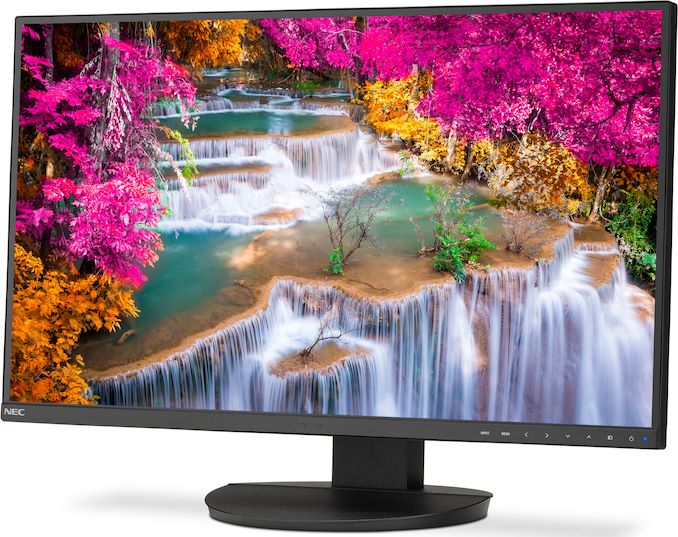
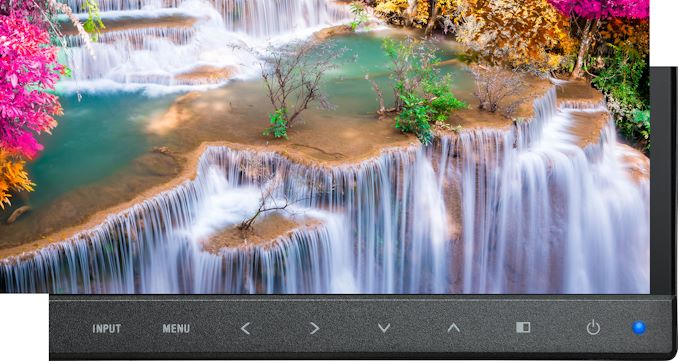
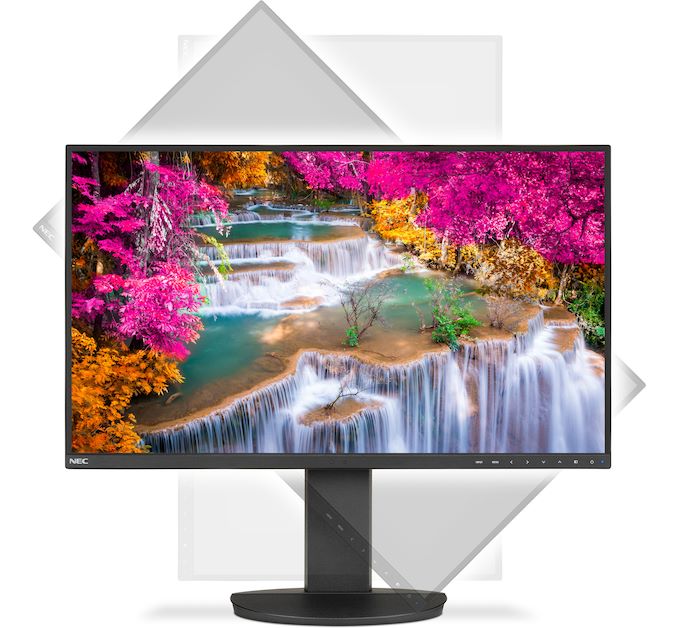

 Quote
Quote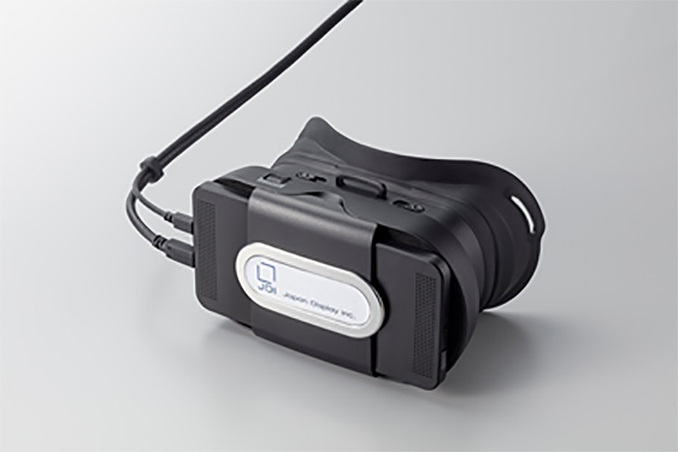
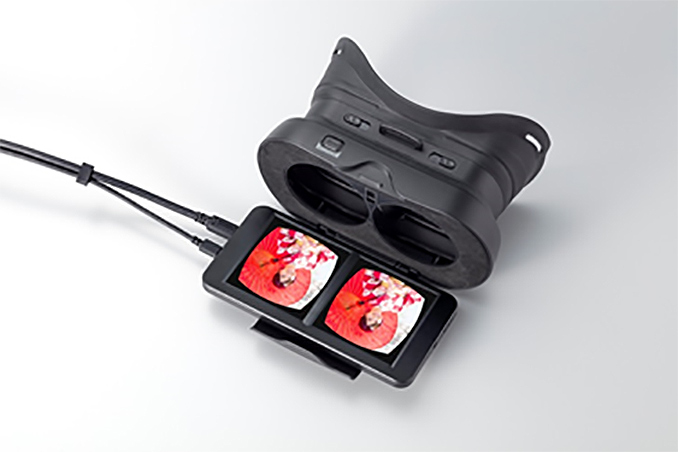
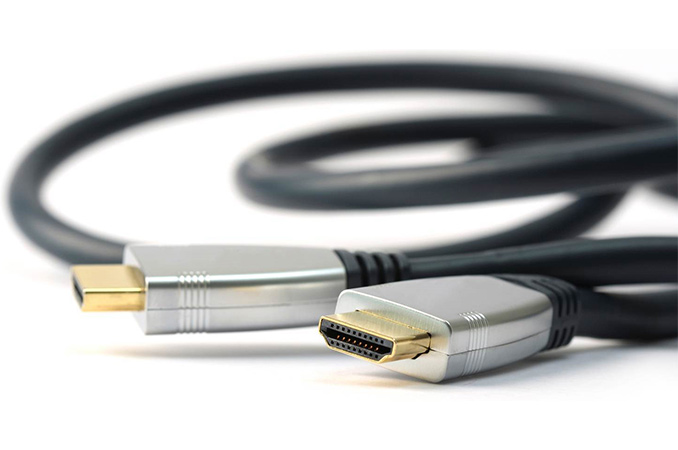
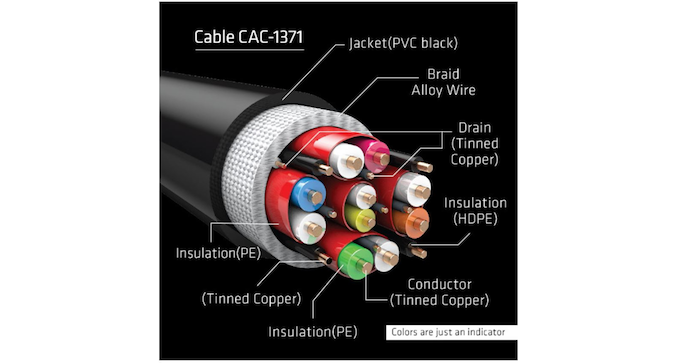
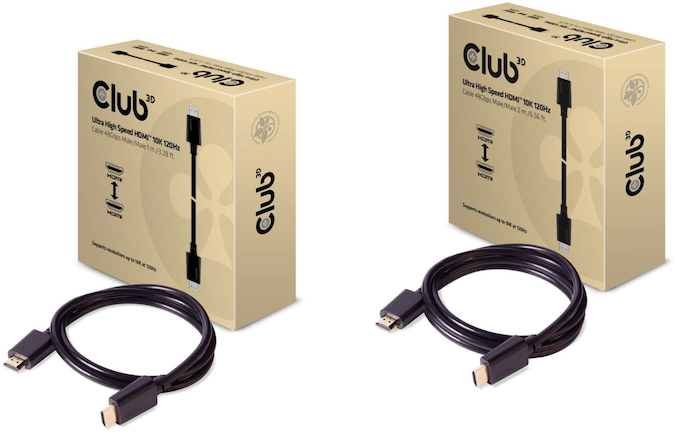
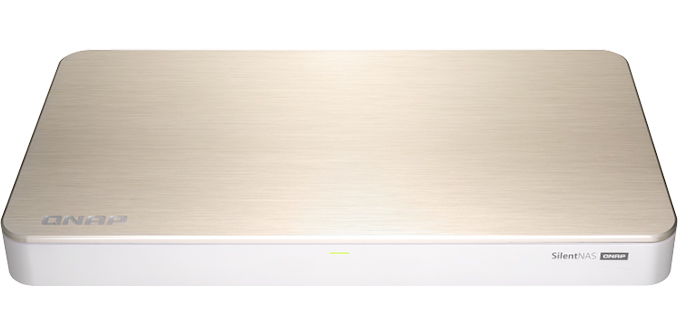

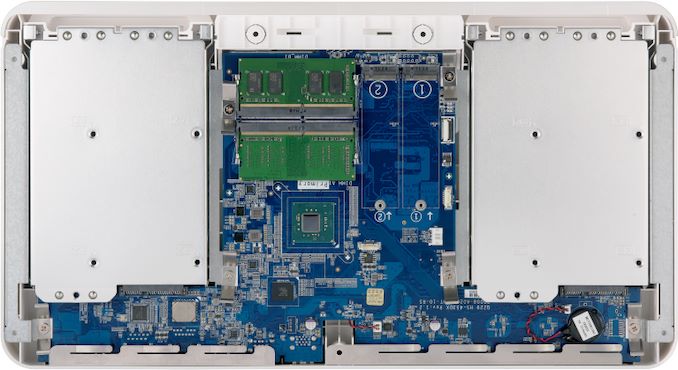
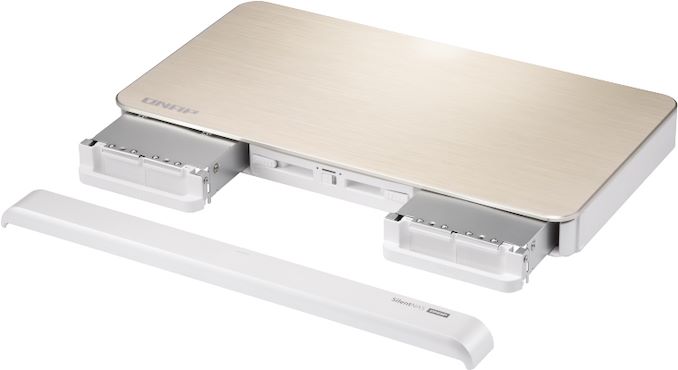
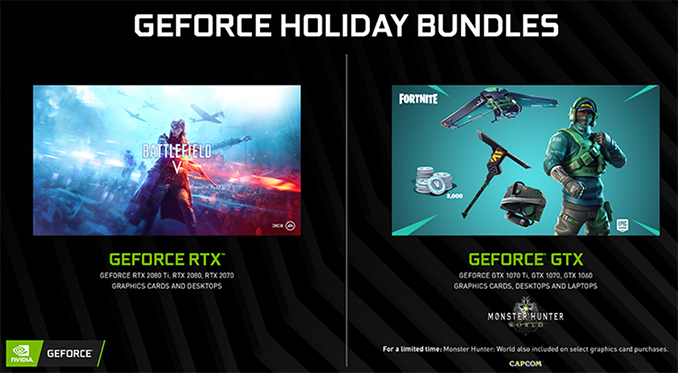
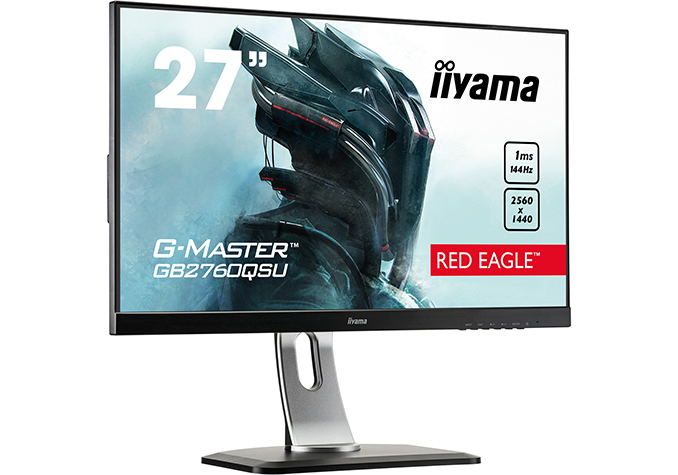
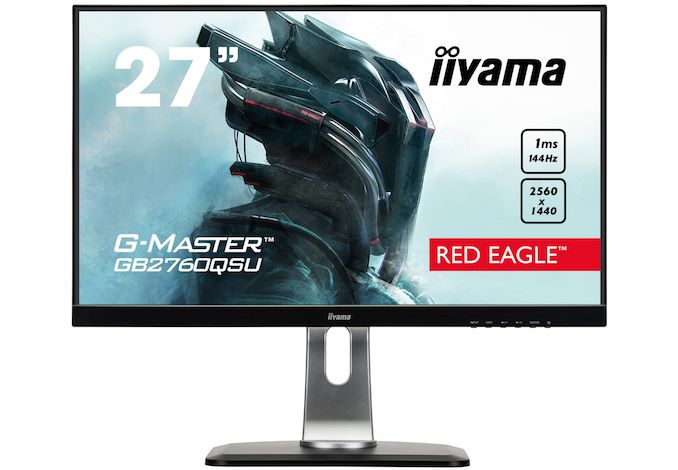

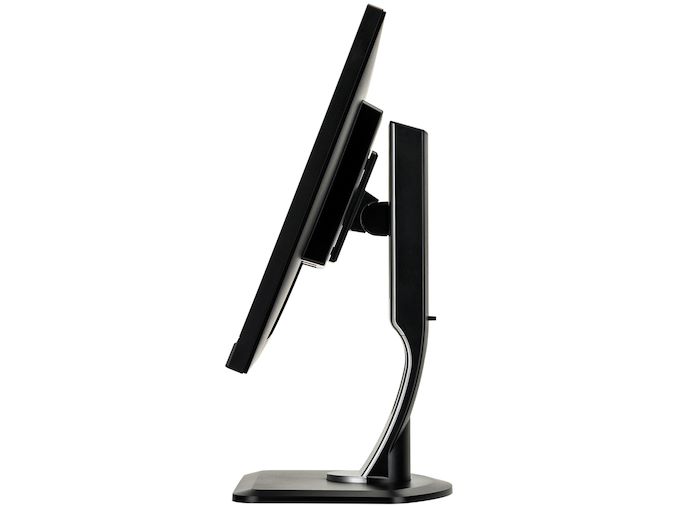




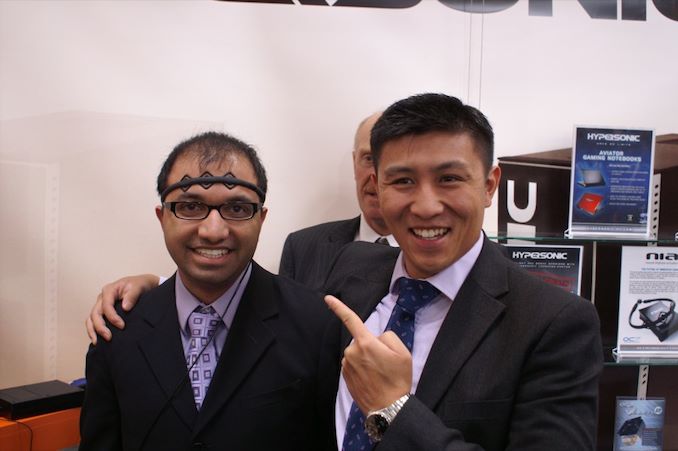
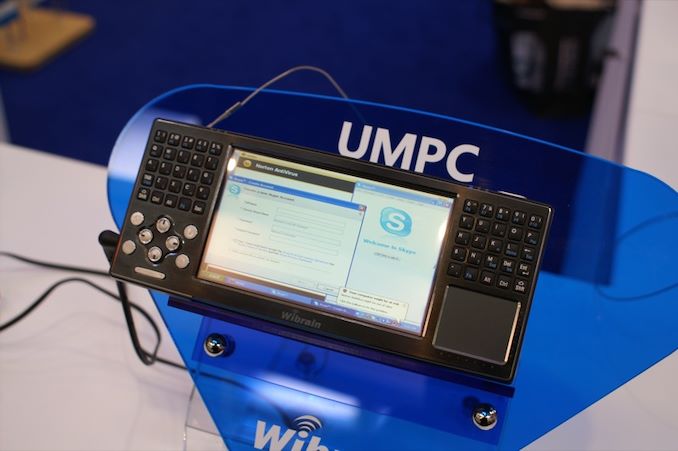

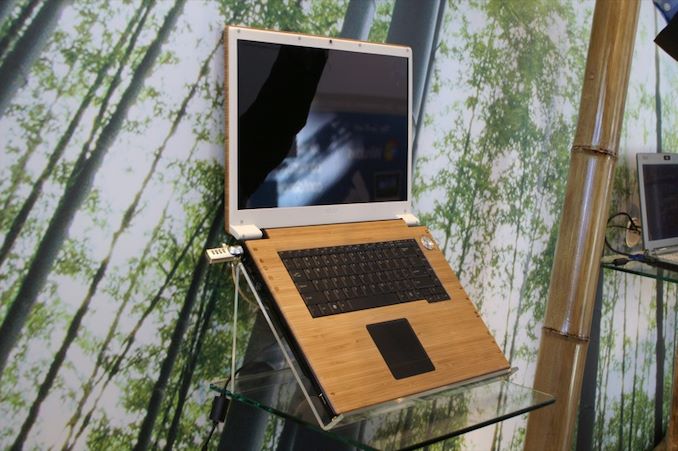


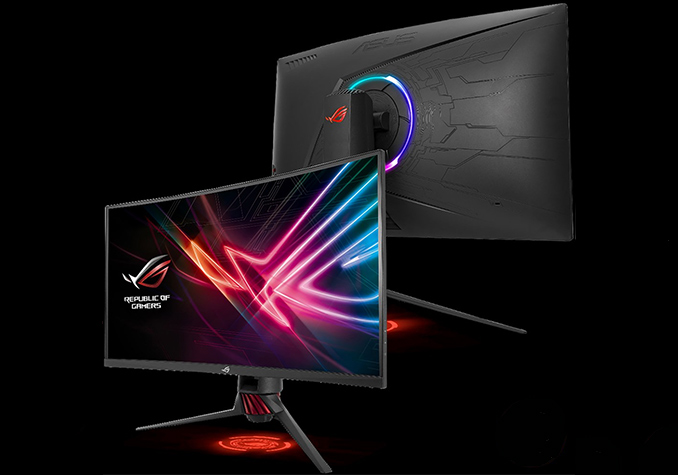
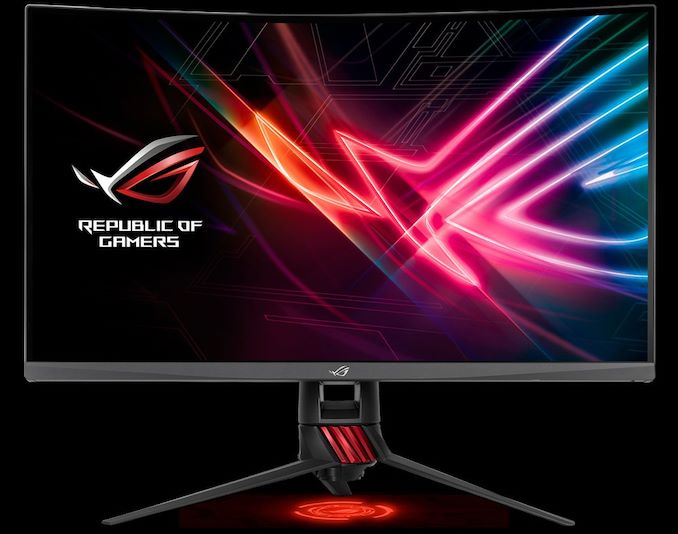
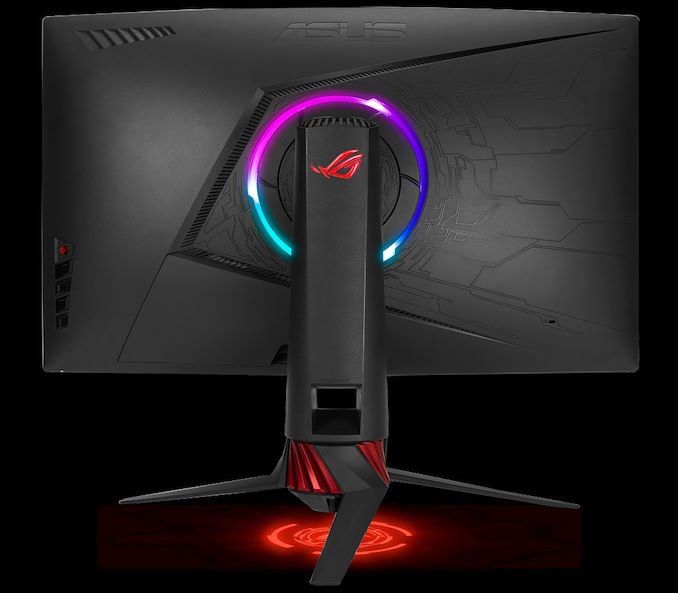
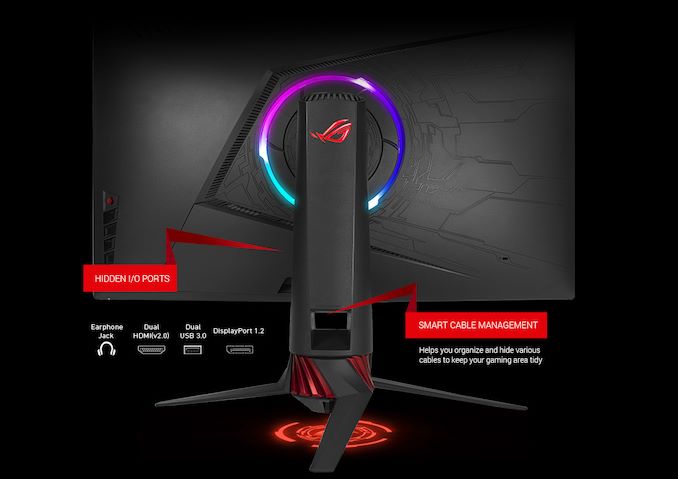

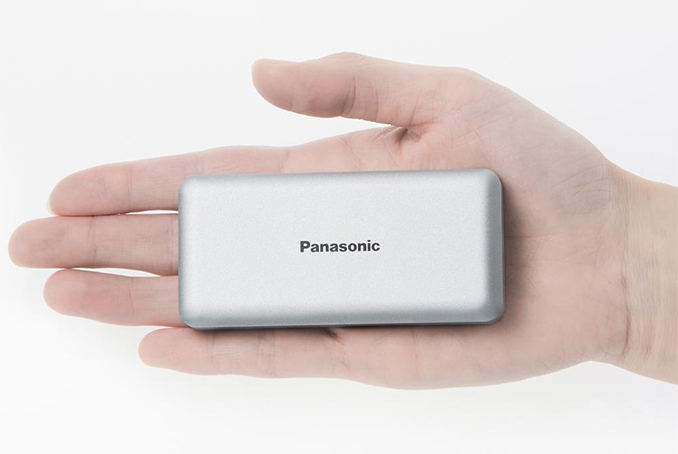
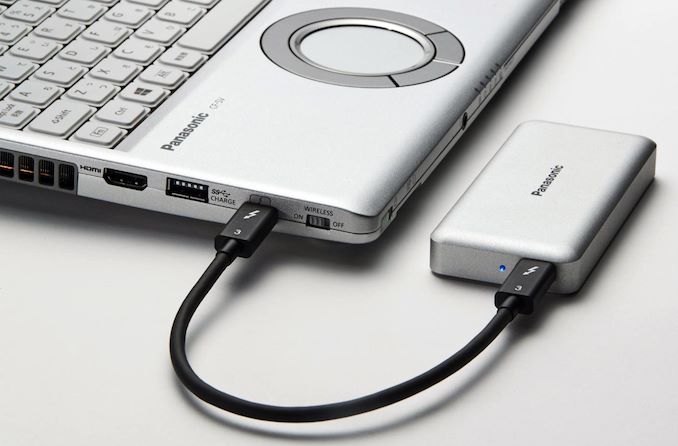
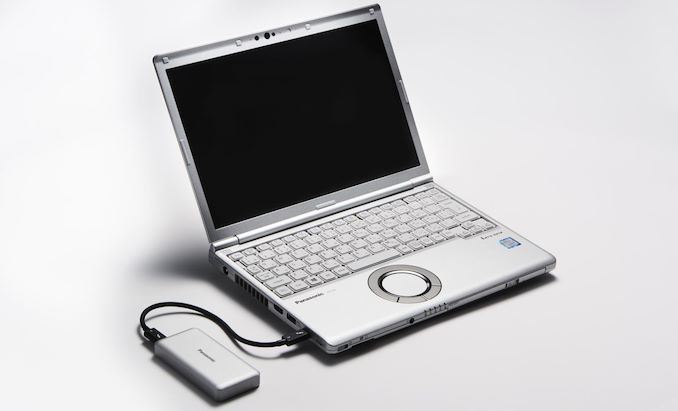
















Bookmarks